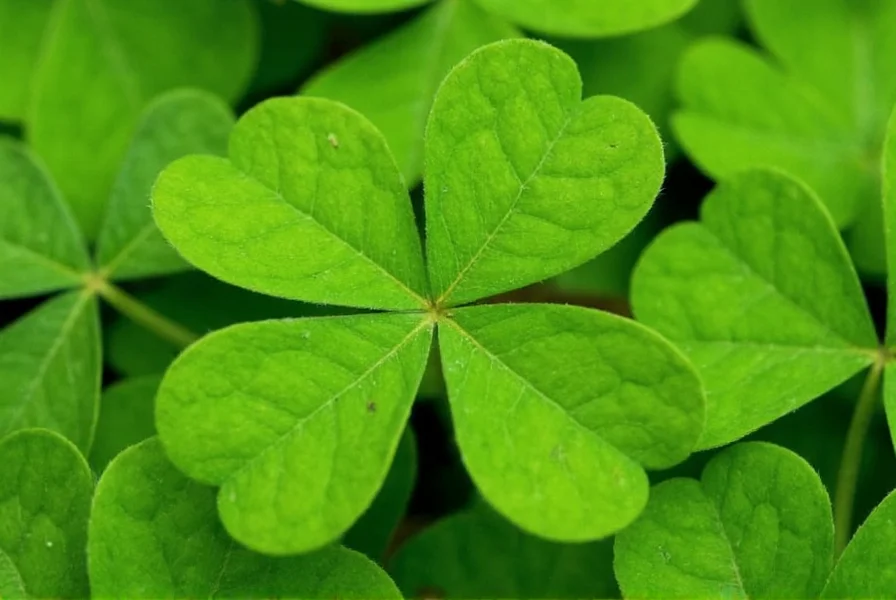While four-leaf clovers have captured the public imagination as symbols of good fortune, their five-leaf counterparts represent an even more unusual botanical phenomenon. Understanding these rare variants requires examining both their scientific basis and cultural interpretations.
The Science Behind Five Leaf Clovers
Five-leaf clovers occur due to a combination of genetic mutation and environmental factors. The white clover plant normally produces three leaflets per leaf stem, following the mathematical pattern known as trifoliate. When additional leaflets appear, it's typically due to:
- Genetic mutation - A recessive gene that occasionally expresses itself
- Environmental stress - Factors like soil composition, temperature fluctuations, or physical damage to the plant
- Chemical exposure - Certain herbicides can cause abnormal leaf growth
Researchers at the University of Georgia have documented that clover plants with more than three leaves often show increased chlorophyll concentration in the additional leaflets, suggesting these variants might have slight photosynthetic advantages under specific conditions.
Rarity Comparison: Three, Four, and Five Leaf Variants
| Clover Type | Estimated Rarity | Scientific Designation |
|---|---|---|
| Three-leaf (normal) | 100% of healthy plants | Trifolium repens (standard) |
| Four-leaf | 1 in 5,000-10,000 | Rare genetic variant |
| Five-leaf | 1 in 20,000-25,000 | Extremely rare mutation |
| Six-leaf or more | 1 in 100,000+ | Exceptionally rare occurrence |
Cultural Interpretations Across History
The symbolism of five-leaf clovers varies significantly across different cultures and historical periods. While four-leaf clovers consistently represent luck in most traditions, five-leaf variants have more diverse interpretations:
In Irish folklore, which heavily influenced modern clover symbolism, five-leaf clovers were sometimes called "rose clovers" and associated with protection from evil spirits. Some Celtic traditions assigned specific meanings to each leaf: hope, faith, love, luck, and financial prosperity.
During the Victorian era, when flower symbolism reached its peak, finding a five-leaf clover was considered an exceptionally positive omen, often interpreted as representing health, wealth, love, fame, and protection. This interpretation persists in some modern fortune-telling practices.
Five Leaf vs. Four Leaf: Understanding the Differences
Many people wonder whether a five-leaf clover carries more significance than the traditional four-leaf variety. The answer depends on cultural context and personal belief systems.
From a botanical perspective, both represent the same genetic anomaly, with the five-leaf variant simply being rarer. Some contemporary interpretations suggest that while four-leaf clovers represent standard good luck, five-leaf variants symbolize amplified fortune or more specific blessings.
Researchers at the Royal Botanical Gardens have noted that the increased rarity of five-leaf specimens doesn't correlate with any measurable biological advantage, suggesting their cultural significance stems purely from human interpretation of rarity.
Practical Guidance for Clover Enthusiasts
For those interested in finding or cultivating five-leaf clovers, certain approaches can slightly improve your odds:
- Search in established clover patches - Older, well-established clover fields have higher mutation rates
- Look after environmental stress - Check areas after frost, drought, or physical disturbance
- Examine carefully - Five-leaf variants often have one smaller leaflet that might be overlooked
- Consider cultivation - Some gardeners report success with specific soil amendments

Preserving a discovered five-leaf clover follows similar methods to four-leaf specimens - pressing between book pages or using silica gel for drying. Due to their rarity, many collectors consider five-leaf specimens worthy of special preservation techniques.
Scientific Perspective on Clover Variations
Botanists emphasize that the appearance of extra leaves in clovers represents natural genetic variation rather than any supernatural phenomenon. The University of Wisconsin's plant genetics department has identified specific gene sequences associated with multi-leaflet expression in Trifolium repens.
Dr. Eleanor Chen, a leading researcher in plant morphology, explains: "The occurrence of five-leaf clovers follows standard Mendelian inheritance patterns with incomplete dominance. While culturally significant, they represent the same biological processes that create other plant variations we see in nature."
Understanding the science behind these rare variants doesn't diminish their cultural significance but rather provides context for appreciating nature's diversity. The search for five-leaf clovers continues to captivate people worldwide, blending scientific curiosity with enduring folklore.
Frequently Asked Questions
What does a five leaf clover symbolize?
A five leaf clover traditionally symbolizes enhanced luck compared to the standard four-leaf variety. Specific interpretations vary by culture, but common meanings include health, wealth, love, fame, and protection. Some traditions assign each leaf a specific meaning: hope, faith, love, luck, and financial prosperity.
How rare is a five leaf clover compared to a four leaf clover?
Five leaf clovers are significantly rarer than four-leaf variants. While four-leaf clovers appear approximately once in every 5,000-10,000 plants, five-leaf specimens occur roughly once in every 20,000-25,000 plants. Six-leaf and higher variants become increasingly rare, with six-leaf specimens appearing about once in every 100,000 plants.
Is there a scientific explanation for five leaf clovers?
Yes, five-leaf clovers result from a combination of genetic mutation and environmental factors. Researchers have identified specific recessive genes that, when expressed, cause additional leaflets to form. Environmental stressors like temperature fluctuations, soil composition changes, or physical damage to the plant can also trigger this mutation. The phenomenon follows standard Mendelian inheritance patterns with incomplete dominance.
Can you grow five leaf clovers intentionally?
While you cannot guarantee five-leaf production, certain conditions may increase the likelihood. Established clover patches, particularly those experiencing mild environmental stress, show higher mutation rates. Some gardeners report success with specific soil amendments, though scientific evidence for targeted cultivation remains limited. The most reliable method remains careful searching in natural clover populations.
Does a five leaf clover bring more luck than a four leaf clover?
This depends on cultural interpretation and personal belief. Many traditions consider the five-leaf variant to represent amplified luck or more specific blessings compared to the standard four-leaf clover. However, from a scientific perspective, both represent the same natural genetic variation, with the five-leaf form simply being rarer. The perceived increase in luck stems from cultural interpretation of this increased rarity.










 浙公网安备
33010002000092号
浙公网安备
33010002000092号 浙B2-20120091-4
浙B2-20120091-4